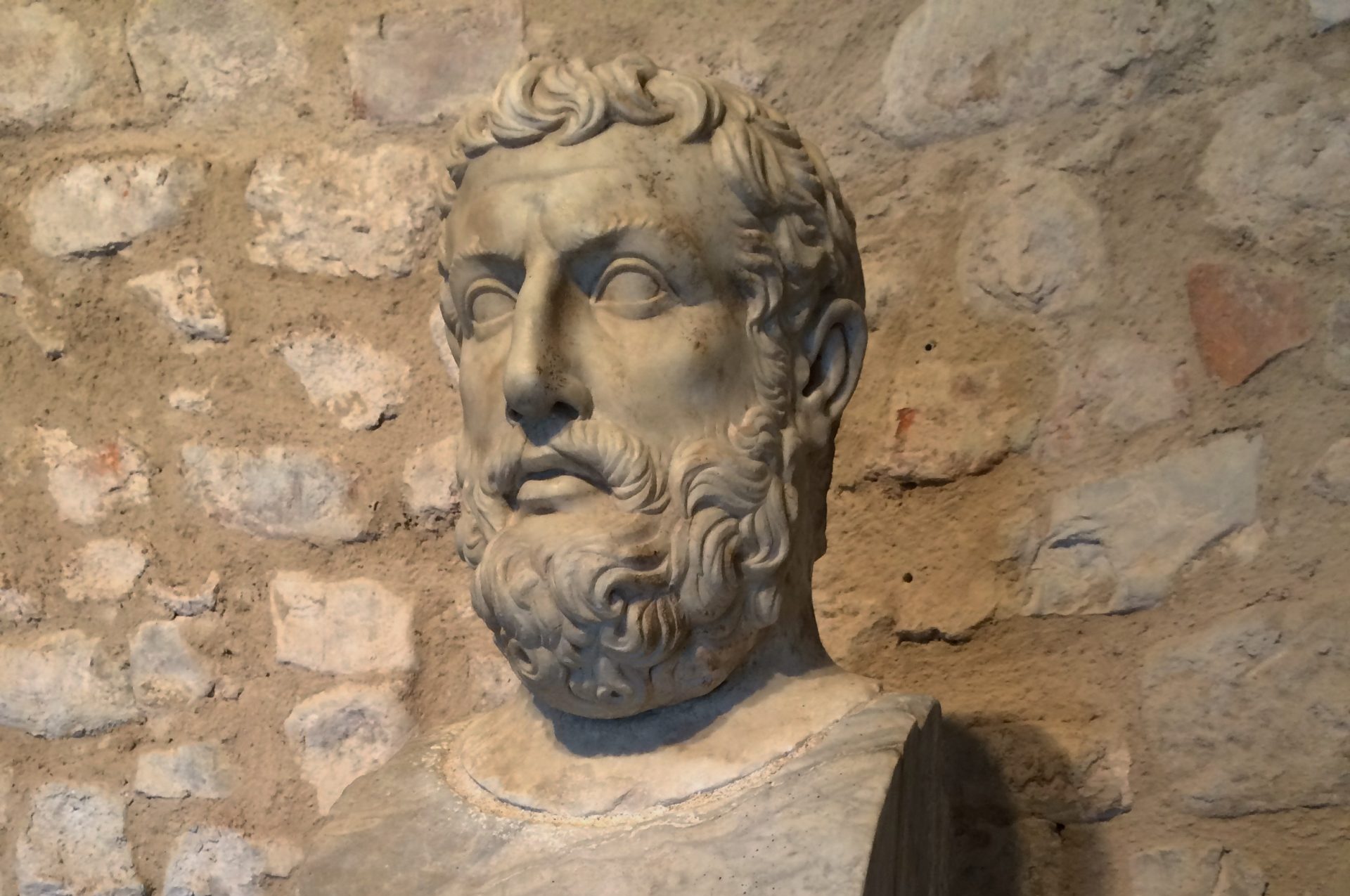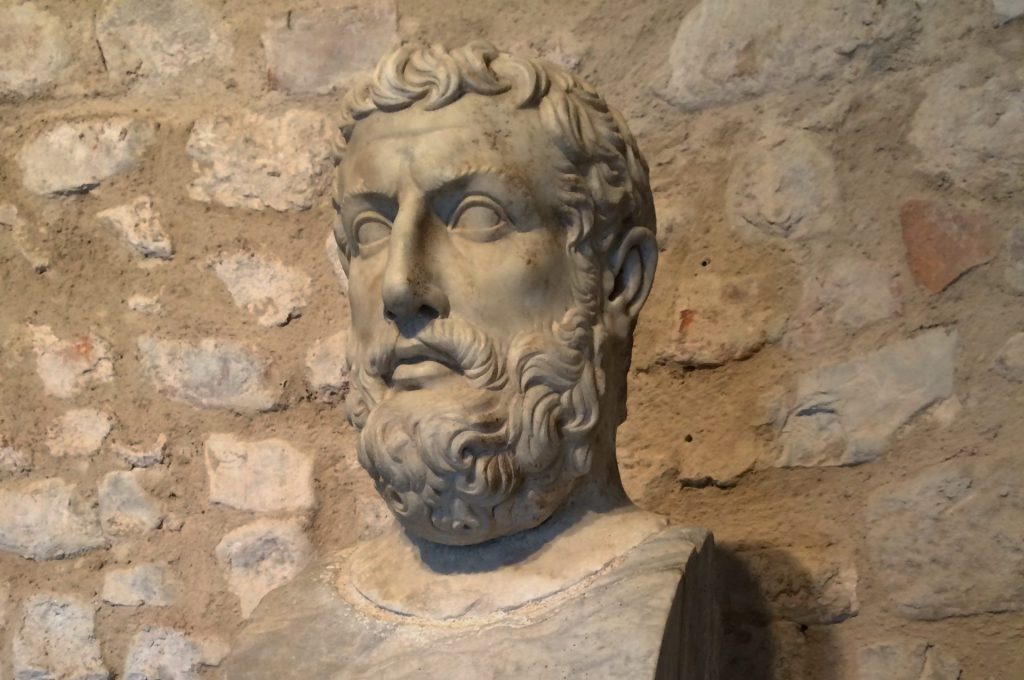Parmenides, Descartes, and Awakening
What two ancient Greek philosophers can teach us about practice The post Parmenides, Descartes, and Awakening appeared first on Tricycle: The Buddhist Review.

What two ancient Greek philosophers can teach us about practice
By Matthias Esho Birk Mar 17, 2024 Sergio Spolti, CC BY-SA 4.0, via Wikimedia Commons
Sergio Spolti, CC BY-SA 4.0, via Wikimedia CommonsOver Christmas, I stumbled on Parmenides. Assuming your education in philosophy is less spotty than mine, you will know who he is: one of the earliest Western philosophers, the father of metaphysics, and a major influence on Plato. It was this quote that I found in Bertrand Russell’s History of Western Philosophy that really stood out to me:
How, then, can what is be going to be in the future? Or how could it come into being? If it came into being, it is not; nor is it if it is going to be in the future. Thus is becoming extinguished and passing away not to be heard of.
Wow, I thought: this is Buddhist teaching! The realization that there is no such thing as a future—only the now. And even though it might appear to our mind that things “come into being” (from a perceived past), that too is simply an illusion. The only “thing” that is real is the ever unfolding now (which, of course, is not a thing either but simply change itself). No coming, going, or passing away. This is no magical insight. We simply realize this when we are completely here—when our mind becomes truly still in meditation. I was moved by the fact that an ancient Greek philosopher seemed to have had the same type of insight the Buddha did thousands of miles away at roughly the same time.
So was Parmenides a mystic? A meditator? A Buddha of the West? And if so, why did this not majorly influence the course of Western philosophy? Why did this not turn Western philosophy into a school of attaining this awakening? Unfortunately, little is known about Parmenides. The only remaining works are fragments of his piece “On Nature” (which includes the above lines), a roughly two-and-a-half-page poem. In the same work, he also writes:
One path only is left for us to speak of, namely, that it is. In it are very many tokens that what is, is uncreated and indestructible, alone, complete, immovable and without end. Nor was it ever, nor will it be; for now it is, all at once, a continuous one. For what kind of origin for it will you look for?
“One path . . . namely, that it is.” I thought: that is maybe one of the best descriptions of zazen—seated meditation—that I have ever heard. When we sit still in zazen, we simply witness what is—completely, fully, always returning to the present moment as it unfolds in the now. But nothing seems to be known about Parmenides’ path: whether he had a meditative practice is unknown. Nothing suggests it. And nothing is known about an awakening experience.
Philosophy scholar Stuart Martin writes in his wise book Parmenides’ Vision:
This Parmenides is credited with insights into the nature and meaning of the universe beyond that which reason alone can discover.
However, as far as I can tell, Western philosophy has simply taken the words of Parmenides as an interesting—rational—point of view on the nature of reality. An argument, very much within reason. And let’s face it: how else could you read Parmenides’ words, other than with your rational-logical mind? Hearing or reading the dharma (let’s consider Parmenides’ words as authentic dharma for a moment) without an actual awakening experience remains just words on a piece of paper: interesting, maybe sparking curiosity or awe, but that’s it. What makes the dharma relevant for our lives is its potential to point us in the direction of practice, so that we can see and experience the “continuous oneness,” the “immovable,” and “indestructible” nature of all things, to use Parmenides’ words.
In Buddhism, there is a saying “don’t mistake the finger for the moon” (a teaching originally coming from the Buddha himself). Buddha’s words, the sutras, Zen texts, Parmenides’ poem, this article, they are all just fingers. Fingers that can point us to experience awakening (the moon) ourselves. But the finger can’t get you to the moon. You need a rocket ship. And it seems that Parmenides didn’t build one (or if he did, evidence of its existence did not survive the test of time). Unlike an actual rocket ship, Zen’s rocket ship does not require rocket science. In its essence, Zen meditation is simply sitting and following our breath.
What makes the dharma relevant for our lives is its potential to point us in the direction of practice
The Buddha taught that there are three elements that are fundamental to practice: the Buddha, the dharma, and the sangha. The dharma (or teaching) is useful only when we can activate it, meaning it needs buddha-insight (awakening), and a practice of attaining buddha-insight. That path, in turn, needs to be shared, practiced, and lived in a community, a sangha, just as the Buddha founded a community that would continue on with his teaching. Taizan Maezumi Roshi, one of the early Japanese Zen teachers to bring Zen to the West, used to say “Zen is physical practice.” Zen is practical work. This is an important lesson for all of us. And one that Parmenides’ insight seems to reinforce: without the physical practice, dharma is just words. Words that are understood with our intellect, and ultimately keep us in the prison of thought.
Western philosophy went on to idealize this thinking mind, putting it at the center of human existence, ultimately leading to René Descartes’s famous statement, made around 2,000 years after Parmenides, “je pense, donc je suis”—or, “I think, therefore I am.” This went on to become one of the central tenets of Western philosophy. His view was that because we can doubt our own existence (via thought), there must be a thinking entity—a self. In other words, to Descartes, our ability for thought proves that there is a self. In fact, in Zen, it is the other way around: it is not that we have a separate self and therefore thoughts. It is that because we think (and only because of that), that we have the sense of a separate self. But that sense of self exists only because we are capable of conceptual thoughts. And when in meditation, we still our mind, and we train it to see without being caught in conceptual thought, then we awaken: we realize that there is no self at all. Nothing that is separate. Just this: this sound, this experience, this sensation.
Without the physical practice, dharma is just words. Words that are understood with our intellect, and ultimately keep us in the prison of thought
When our mind gets still and we experience what Parmenides is pointing us to (with his poem-finger), we realize that the finger is indeed not different from the moon, and Zen meditation is not a tool to have an awakening experience that is separate from ourselves. Or as Parmenides says in “On Nature”:
Nor is it divisible, since it is all alike, and there is no more of it in one place than in another, to hinder it from holding together, nor less of it, but everything is full of what is.
![]()
Thank you for subscribing to Tricycle! As a nonprofit, we depend on readers like you to keep Buddhist teachings and practices widely available.
This article is only for Subscribers!
Subscribe now to read this article and get immediate access to everything else.
Already a subscriber? Log in.

 AbJimroe
AbJimroe 































